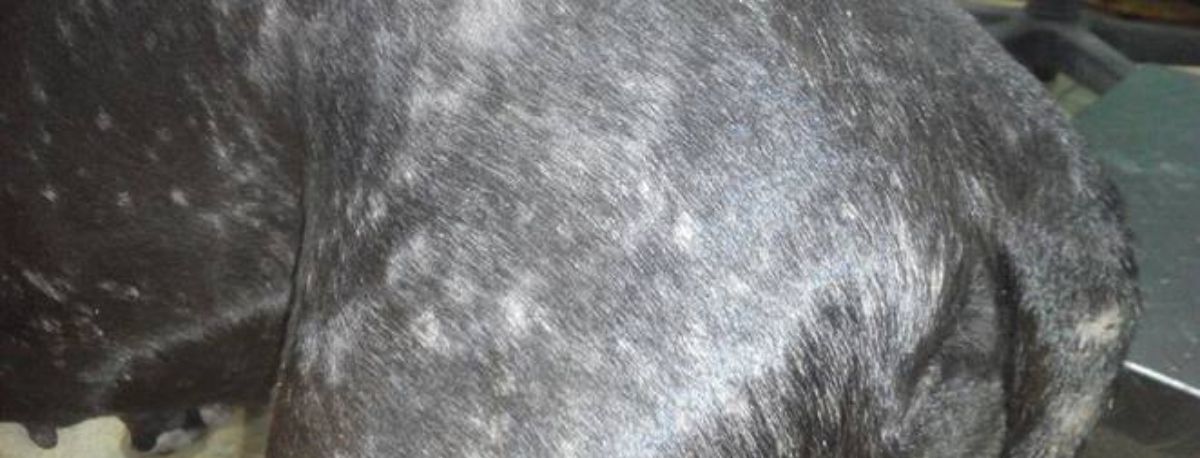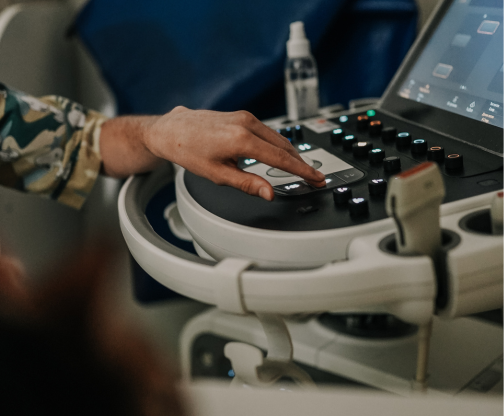Pyoderma
Опубліковано
09.01.2020
Pyoderma
It is not uncommon to see patients with a "stack" of bacterial culture results and a complaint that "it", this very staphylococcus, does not go anywhere, despite repeated attempts at treatment. In all these patients, indeed, in most cases, there are signs of pyoderma (bacterial infection), but almost never it is the root cause of the disease. The fact is that the skin is not a sterile organ and all animals normally have bacteria (staphylococci) on the skin, but in small numbers and they do not cause any harm. Disease (pyoderma) occurs only if the skin, for some reason, "allows" bacteria to multiply. And there are many reasons for this - for example, a common root cause is allergies, especially if it is a young animal or the problem "stretches" from a young age, if recurrent (constantly recurring) pyoderma appeared in old age, and previously the animal has never bothered with skin diseases, it is worth suspecting endocrine (hormonal) disorders.
Almost every skin disease, whether parasitic, immune-mediated, sooner or later will lead to a secondary bacterial infection. That is why it makes no sense to treat "staphylococcus" separately from the underlying disease, because until we identify and control the root cause, pyoderma will return again and again.
Pyoderma can look quite different, it will all depend on what type of skin lesions are currently prevalent.
It starts with papules (bumps), then pustules (pustules) appear, then the pustules burst and scabs (crusts) form, then the crusts fall off with the hair and alopecia (bald spots) appear.
All elements of the rash may be present on the dog's skin at the same time, and they will, for example, be clearly visible on the hairless areas (belly). But on the back of a long-haired dog, the rash is often noticed only in the form of a scab, and in a short-haired dog, only when alopecia (a kind of "moth-eaten" hair) appears. Sometimes, pyoderma turns from superficial to deep and then nodules (nodules) and fistulas are added.
A bacterial culture from the skin will not always be informative for us - a culture from any skin will "grow" staphylococcus because it should be there. Much more useful for diagnosis will be cytologic study of smear-print from the skin. This is a study that will not take much time, but will give an idea whether it is really an infection (presence of inflammatory cells, bacteria, phagocytosis).
It is no secret that bacterial infections are treated with antibiotics, and it is precisely with the wrong treatment that we can turn those "harmless" staphylococci living on everyone's skin into really "scary" ones. The fact is that the treatment of skin infections requires higher doses of antibiotics and the duration should be at least several weeks. Using a short course or low doses of antibiotics we kill only the "weakest" bacteria. The survivors (who will multiply further) may become resistant, not only to that particular antibiotic, but to the whole group.
Chaotically using antibiotics, we risk "growing" a resistant infection (so-called methicillin resistant Staphylococcus aureus - MRSA), which will not only be a source of distress for the dog, but also a threat to others, including humans.
The problem of antibiotic resistance has been acute in recent years in both the medical and veterinary communities (according to recent data, about 25,000 people in the world die annually from resistant infections).
In order to avoid the development of resistant bacteria, the following rules should be strictly followed:
-Antibiotics should be used only under the supervision of a doctor! Doses and dosages must be respected! Do not discontinue an antibiotic on your own, even if the disease seems to have passed!
- Antibiotics should only be used when they really cannot be avoided (e.g. the antiseptics used are not working, lesions are too extensive/deep/"old", etc.).
- The underlying disease must be identified and controlled!
Схожі статті

Preparation for ultrasound examination (ultrasound)
It is important to remember that proper preparation of the animal can significantly facilitate the abdominal ultrasound process. By performing this procedure, the doctor can detect possible problems in time and provide proper treatment. High-tech ultrasound is one of the ways to quickly and informatively diagnose and ensure a long and healthy life for our pets.

Brachycephalic syndrome in dogs and cats.
What exactly is brachycephalic syndrome and how to live with it, how to prevent complications for the body that this syndrome can lead to?

WHY ARE DOCTORS NOT ALL-POWERFUL?
A good doctor is worth its weight in gold. Everyone understands this and can spend years looking for the best one, and when they find one, they will expect miracles.

Allergy
Allergy

SYNDROME OF TIRED TANKLES IN CATS
Tired antennae of a cat or What do you know about fatigue?

Bacterial myocarditis
This disease is extremely rare in dogs. In cats, it is even less common - 0.006-0.018% of cases.

How to protect home lovers from radiation damage.
In recent days, we have received many calls asking for advice on the need to protect animals during a possible radiation exposure.

STERILIZATION AND CASTRATION OF CATS AND DOGS
Such operations do not affect the change of the animal's character. They can be done from an early age, in particular from 8 weeks. Convenience, first of all for the animal, is that the young organism has the ability

Side effects of antiparasitic drugs
The need for tick and flea treatments for pets is a well-known fact.

How you can help calm cats and reduce stress today
the head of the felinology department, tells us.

